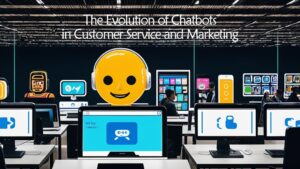|
Getting your Trinity Audio player ready...
|

Amidst the dynamic evolution of programming practices, programmers are constantly seeking ways to enhance productivity and efficiency. Artificial Intelligence (AI) has emerged as a game-changer in this regard, offering a plethora of tools designed to streamline coding processes and empower developers to build better software faster. In this article, we’ll explore the top 10 AI coding tools that are making life easier for programmers, including GitHub Copilot, Codeium, Cody, CodeGPT, and Amazon CodeWhisperer. We’ll delve into how each tool assists programmers, provide examples of companies or projects leveraging them, and highlight the benefits they offer.
1. GitHub Copilot:
GitHub Copilot, developed by GitHub in collaboration with OpenAI, is a revolutionary AI pair programmer that assists developers in writing code. Leveraging state-of-the-art machine learning models, Copilot analyzes context and code patterns to provide relevant suggestions in real-time. Whether it’s completing entire functions, generating code snippets, or offering insightful comments, Copilot accelerates the coding process and helps programmers overcome common hurdles.
Example:
A software development team at a tech startup is working on a new web application. With GitHub Copilot, they can quickly prototype features, generate boilerplate code, and explore different implementation approaches. By harnessing Copilot’s suggestions, they save time and maintain code consistency across the project.
Benefits:
- Accelerates coding tasks, reducing development time.
- Improves code quality and consistency.
- Facilitates rapid prototyping and experimentation.
2. Codeium:
Codeium is an AI-powered code completion tool that empowers developers to write cleaner and more efficient code. By analyzing codebases and learning from industry best practices, Codeium provides intelligent suggestions tailored to the programmer’s context. Whether it’s refactoring code, optimizing algorithms, or detecting potential bugs, Codeium acts as a trusted coding companion, enhancing productivity and code quality.
Example:
A software engineer is refactoring a legacy codebase to improve performance. With Codeium’s assistance, they identify redundant code snippets and apply appropriate refactorings, leading to a significant reduction in execution time and resource consumption.
Benefits:
- Enhances code readability and maintainability.
- Identifies and addresses code smells and performance bottlenecks.
- Supports continuous improvement through actionable insights.
3. Cody:
Cody is an AI-driven code review tool designed to help developers identify and fix issues in their codebase. Leveraging machine learning algorithms, Cody performs comprehensive code analysis, detecting errors, vulnerabilities, and potential optimizations. By providing actionable feedback and suggestions, Cody enables developers to write more robust and secure code, thereby reducing the risk of bugs and security vulnerabilities.
Example:
A software development team is preparing to release a new version of their mobile application. Using Cody, they conduct a thorough code review, uncovering several memory leaks and resource inefficiencies. By addressing these issues proactively, they ensure a smoother and more reliable user experience.
Benefits:
- Enhances code quality and security.
- Streamlines the code review process, saving time and effort.
- Helps mitigate risks associated with software defects and vulnerabilities.
4. CodeGPT:
CodeGPT is an AI-powered code generation tool that leverages the power of natural language processing (NLP) to assist developers in writing code. Based on OpenAI’s GPT (Generative Pre-trained Transformer) architecture, CodeGPT can understand and generate code snippets based on natural language descriptions or comments. Whether it’s implementing complex algorithms, designing user interfaces, or automating repetitive tasks, CodeGPT empowers developers to express their ideas in plain language and translate them into working code.
Example:
A data scientist is working on a machine learning project and needs to preprocess a large dataset. Instead of writing custom code from scratch, they use CodeGPT to describe their data preprocessing requirements in natural language. CodeGPT then generates Python code to perform the necessary transformations, saving the data scientist valuable time and effort.
Benefits:
- Facilitates code generation based on natural language descriptions.
- Improves code understanding and collaboration among team members.
- Accelerates development by automating routine coding tasks.
5. Amazon CodeWhisperer:
Amazon CodeWhisperer is an AI-powered code optimization tool that helps developers improve the performance and efficiency of their code. By analyzing code execution paths and identifying optimization opportunities, CodeWhisperer provides actionable recommendations for enhancing performance, reducing resource consumption, and minimizing latency. Whether it’s optimizing algorithms, parallelizing computations, or reducing I/O overhead, CodeWhisperer empowers developers to unlock the full potential of their code.
Example:
A cloud computing company is optimizing their backend infrastructure to handle increased traffic during peak hours. Using CodeWhisperer, they identify performance bottlenecks in their codebase and implement optimizations to reduce response times and improve scalability. As a result, they can accommodate higher loads without compromising on performance or reliability.
Benefits:
- Optimizes code performance and resource utilization.
- Identifies and addresses performance bottlenecks and scalability issues.
- Enhances the overall efficiency and responsiveness of software applications.
6. Hugging Face Transformers:
Hugging Face provides pre-trained models and libraries for natural language processing tasks, allowing developers to leverage state-of-the-art AI models with just a few lines of code. These transformers facilitate various NLP tasks such as text classification, language translation, sentiment analysis, and text generation. By leveraging pre-trained models, developers can save time and computational resources while achieving high performance on NLP tasks.
Example:
A social media monitoring platform integrates Hugging Face Transformers to analyze user-generated content for sentiment analysis and topic extraction. By using pre-trained models, the platform can quickly process large volumes of text data, extract actionable insights, and provide real-time analytics to businesses.
Benefits:
- Simplifies NLP tasks with pre-trained models.
- Enables rapid prototyping and experimentation in NLP applications.
- Empowers developers to leverage cutting-edge AI models without extensive training or expertise.
7. AutoML:
AutoML (Automated Machine Learning) platforms like Google Cloud AutoML and Microsoft Azure AutoML automate the process of building and deploying machine learning models, requiring minimal coding expertise. These platforms offer a user-friendly interface for data preprocessing, model selection, hyperparameter tuning, and deployment. By automating the tedious and complex aspects of machine learning, AutoML democratizes AI development and enables developers with limited ML experience to create sophisticated models.
Example:
A healthcare startup uses Google Cloud AutoML to develop a predictive model for diagnosing medical conditions based on patient data. By uploading labeled datasets to AutoML, the startup’s data scientists can experiment with different algorithms and configurations to build accurate prediction models without writing extensive code.
Benefits:
- Reduces barriers to entry for machine learning development.
- Accelerates model development and deployment.
- Empowers domain experts to leverage AI for solving real-world problems.
8. Hugging Face Accelerated Inference API:
Hugging Face Accelerated Inference API allows developers to deploy and scale deep learning models in production environments with ease. By providing a cloud-based infrastructure for model inference, the API enables developers to serve AI-powered applications without managing infrastructure complexities. With support for various deep learning frameworks and models, developers can seamlessly deploy NLP, computer vision, and other AI models for real-time inference.
Example:
A retail e-commerce platform integrates the Hugging Face Accelerated Inference API to enhance product search and recommendation functionalities. By deploying pre-trained language models for semantic search and content-based recommendation, the platform delivers personalized shopping experiences to users, leading to increased engagement and sales.
Benefits:
- Simplifies deployment and scaling of deep learning models.
- Enables real-time inference for AI-powered applications.
- Reduces infrastructure overhead and operational costs.
9. Deep Learning Studio (DLS):
Deep Learning Studio (DLS) is a platform that allows developers to design, train, and deploy deep learning models without having to write extensive code. With an intuitive visual interface, DLS enables users to build neural networks, customize model architectures, and experiment with hyperparameters interactively. By abstracting away the complexities of deep learning, DLS empowers developers and data scientists to focus on model experimentation and innovation.
Example:
A research institution uses Deep Learning Studio to develop a deep learning model for medical image analysis. With DLS’s drag-and-drop interface, researchers can design convolutional neural networks (CNNs) for detecting abnormalities in medical images such as X-rays and MRIs. By leveraging DLS’s built-in tools for data augmentation, model training, and evaluation, the institution accelerates research efforts in medical imaging diagnostics.
Benefits:
- Streamlines deep learning model development and experimentation.
- Facilitates collaboration among researchers and data scientists.
- Accelerates innovation in AI research and development.
10. CodeGuru:
Amazon CodeGuru uses machine learning to provide automated code reviews and performance recommendations, helping developers improve code quality and efficiency. CodeGuru analyzes code repositories, identifies issues such as resource leaks, concurrency errors, and inefficient algorithms, and provides actionable suggestions for improvement. By integrating with popular code repositories and CI/CD pipelines, CodeGuru seamlessly integrates into the software development workflow, empowering teams to deliver high-quality code at scale.
Example:
A software development team at a financial services company adopts Amazon CodeGuru to enhance the reliability and performance of their trading platform. By incorporating CodeGuru’s automated code reviews into their development process, the team identifies and resolves critical issues in the trading system’s codebase, ensuring compliance with industry regulations and minimizing operational risks.
Benefits:
- Improves code quality and reliability through automated code reviews.
- Optimizes application performance and resource utilization.
- Enables continuous improvement in software development practices.
Finally, these ten AI coding tools represent a diverse range of capabilities, from code completion and optimization to machine learning model development and deployment. By leveraging AI technologies, programmers can streamline their workflows, accelerate development cycles, and build innovative software solutions that meet the demands of today’s digital economy. Whether you’re a seasoned developer or a novice coder, integrating these tools into your toolkit can significantly enhance your productivity and success in the rapidly evolving field of software engineering.




